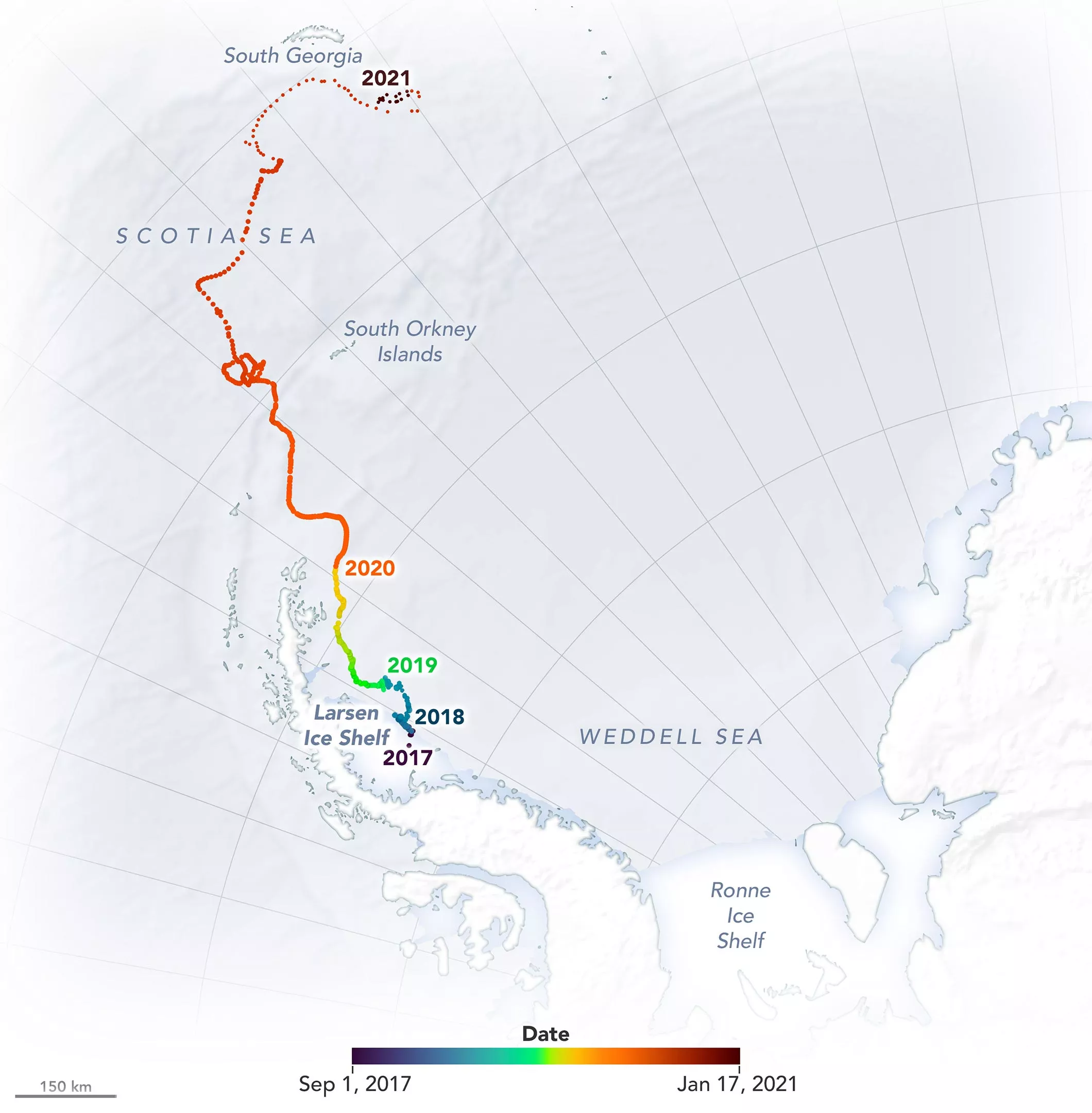An iceberg began to die as soon as it was born. The waves cut its edges, the air thawed it from above, and the water melted it from below. Scientists have recently documented this death throes in one of the world's largest known icebergs. In july2017, iceberg a-68 broke from Larsen C ice shelf on the east coast of the Antarctic Peninsula. At that time, it was the largest iceberg in the world and the sixth largest iceberg in the 30-year record.

Its area is nearly 5800 square kilometers, or about the size of Delaware. In other words, the a-68 lost a lot. In three and a half years, the icebergs broke and melted, leaving a mark on the marine environment, especially near the remote island of South Georgia.
Anne braakmann folgmann, a doctoral student from the University of Leeds, said: "icebergs are a source of cold water and nutrients in the Southern Ocean. However, where and how much of these things are released have not been well studied, and have not been included in ocean models, especially for the largest icebergs."
To this end, braakmann folgmann and his colleagues began to draw the journey of a-68a. They used satellite data to record the changes in thickness, area, volume and mass of icebergs from July 2017 when they broke off the ice shelf to January 2021 when they began to disintegrate rapidly.
The map above shows where and when the icebergs thinned as they drifted northward from the Weddell Sea to the Scott sea. The first map (left) shows the thickness of the iceberg in july2017, when it was still near the Larsen C ice shelf. It is worth noting that its left side is thicker because it is connected to the ice shelf, while its right side is thinner because it is exposed to the sea. At that time, its total average thickness was 235 meters. As the iceberg drifted north, it encountered warmer air and water temperatures, which accelerated melting. By january2021, when the iceberg approached South Georgia, it had thinned to an average thickness of 168 meters.
About 85% of icebergs are below the water surface -- which is not ideal for measuring their total thickness. But scientists can now estimate the thickness of icebergs by measuring their parts above the water surface. The data from NASA icesat-2 and ESA cryosat-2 can show the distance from the satellite to the iceberg surface and to the sea surface. The difference between these measurements is called the "free surface" of the iceberg - the height of the ice above the water surface. Scientists can then convert this height into thickness by calculating the density of the iceberg, the snow layer above it, and the surrounding sea water.

Researchers show that from July 2017 to January 2021, the melting of the bottom of the iceberg accounts for 32% of its loss. The melting peaked near South Georgia Island. Scientists estimated that 152billion metric tons (152billion cubic meters) of fresh water were added to the ocean in three months, which is equivalent to 61million Olympic swimming pools. Scientists are still investigating the impact of all this fresh water on local marine characteristics. They also wanted to know whether the extra nutrients provided by melting icebergs to the ocean promoted any biological production.
Other ice losses occur when large pieces of ice break off from either side of the iceberg. This is especially true when a-68a leaves the protective sea ice near Antarctica and moves northward, where it is exposed to destructive waves in the open ocean. As the iceberg drifts northward, thinning and fragmentation are increasing, but when the iceberg disintegrates in the North Scotia sea, fragmentation eventually takes the dominant position.